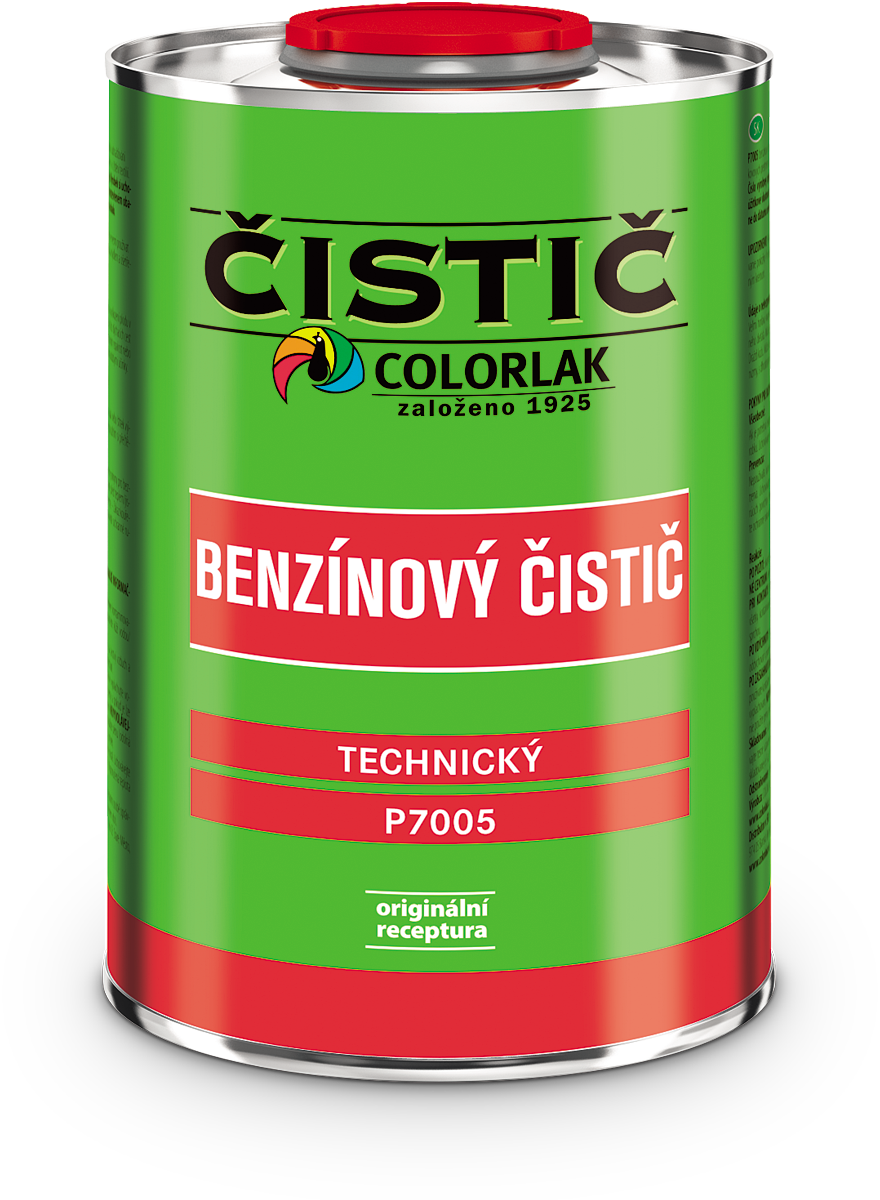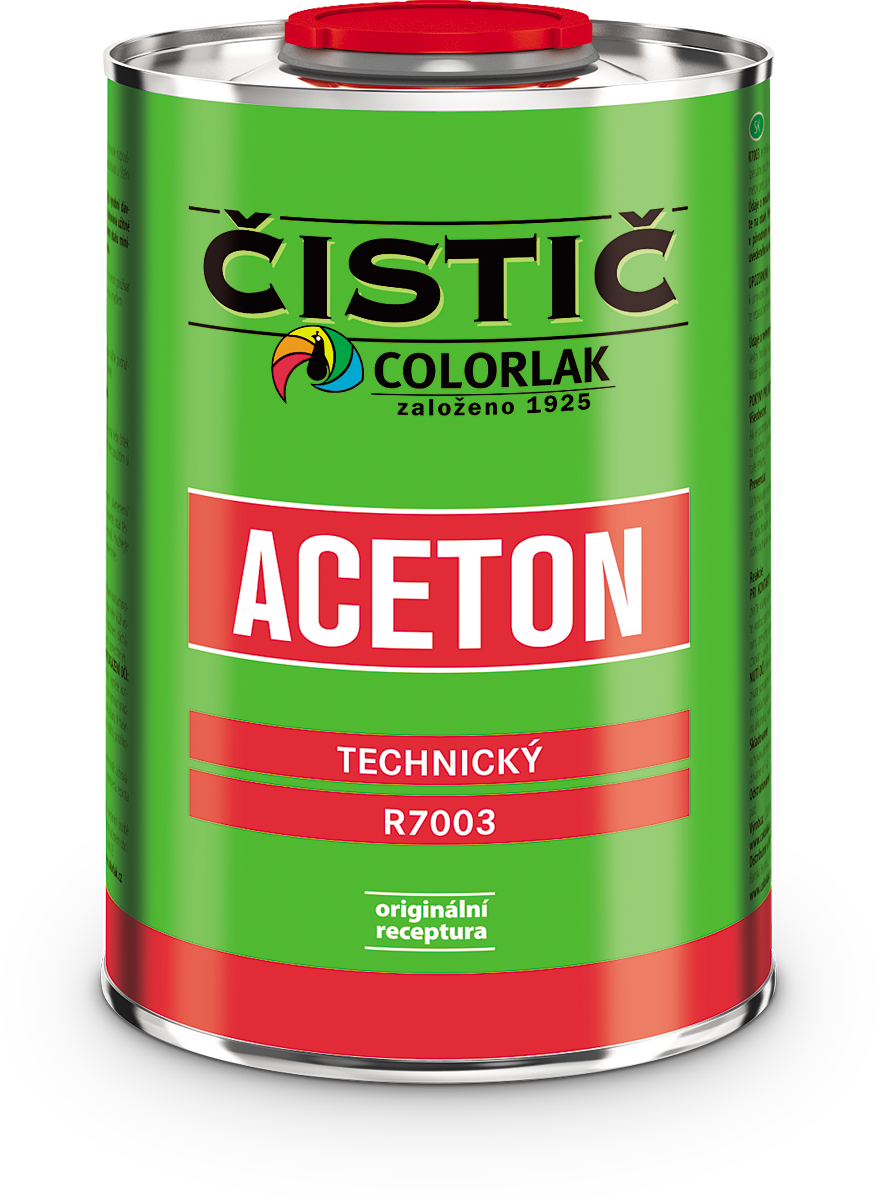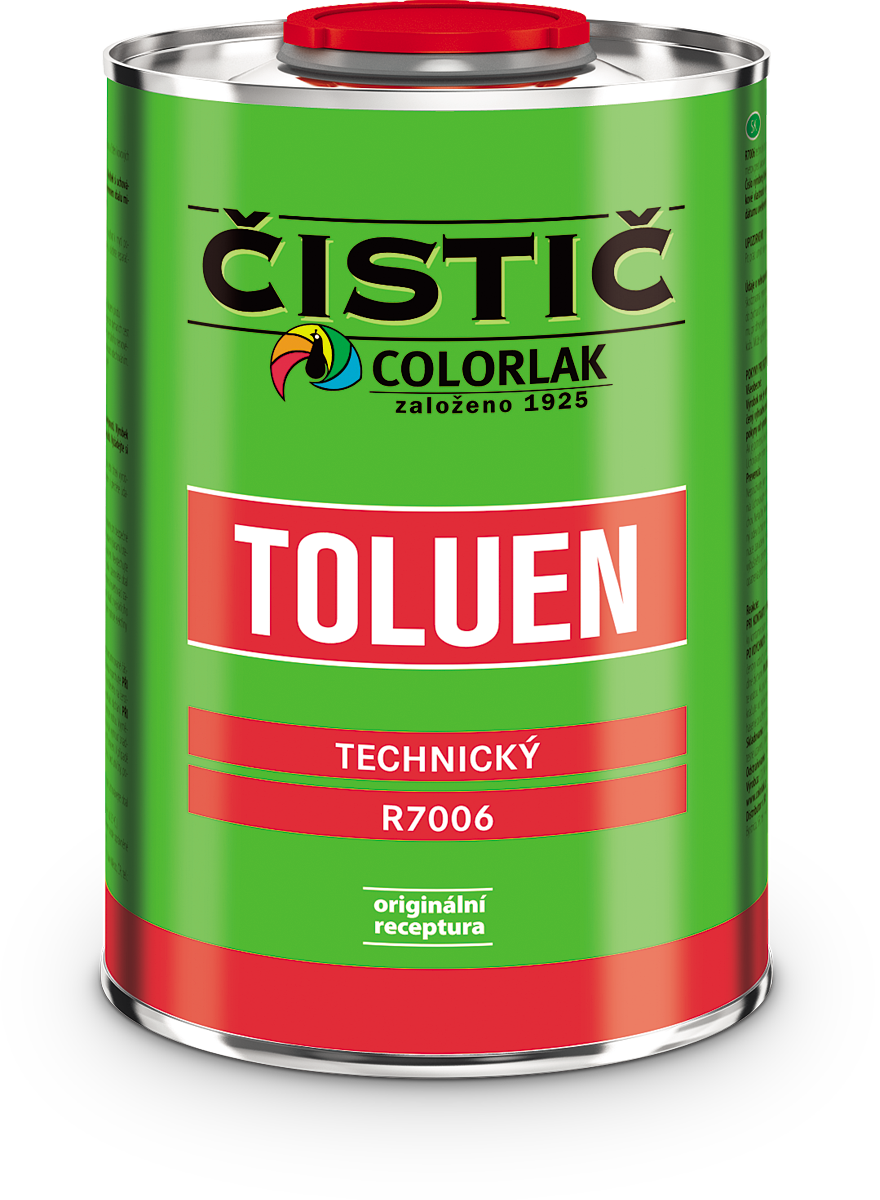For degreasing the metal substrate, there are a number of preparations and methods, but we will only cover those available for a small amount of craftsmanship or hobby work. The degreasing of the surface is just one step from the overall requirement for good surface preparation.
Basic tips and recommendations:
- Only a well degreased surface guarantees a functional new coating.
- The surface under water-based paints must be completely degreased. Even slight grease acts as a separation layer and various defects and paint peeling occur.
- Synthetic colours are tolerant to possible very mild greasiness (withstand slightly worse conditions than water-based paints). But it is still true that only a well-cleaned surface guarantees the maximum performance of the new coating.
- Practical trick – water does not form “balls” on a well degreased surface, and the chalk does not slip, leaving a distinctive mark.
- “Degreasing” with a cloth soaked in a solvent (thinner, technical fluid) is only for small areas and the cloth needs to be changed frequently – it is possible to clean effectively areas up to 1-2 m2 (Do not attempt to degrease large areas – a mixture of grease, oil and solvent will form on the cloth after a while, then spread on the entire product.)
- Oil and grease cannot be removed mechanically. If you try to do so, you risk contamination of used equipment (grinders, brushes, tools) and then transfer of grease to other previously clean products.
- Keep work equipment and tools clean at all times.
- Used and dirty aids, technical fluids and cleaners need to be disposed of in an environmentally friendly manner (waste management centre).
Degreasing also includes the removal of impurities sealed in grease (dust, soot, fibres, etc.).
In this case it is mostly a local and heavier form of contamination, where the basic coarse degreasing can be repeated several times. Larger and stronger layers of dirt can be removed first with a scraper. It is used most often for coarse degreasing BENZÍNOVÝ ČISTIČ P7005, or TOLUEN TECHNICKÝ P7006. As for the simultaneous removal of debris and any colour ACETON TECHNICKÝ R7003 can be used
The problem and therefore the specific degreasing is the removal of various silicone stains and defects in the paint (eye, dimples). These problems are mainly caused by silicone lubricants, but often also by silicone paints or some cleaning agents. It is not always possible to completely remove these silicone contaminants (they are not visible, the surface is otherwise clean, and it is spread by air).
Silicone contamination is difficult to remove (and prove), and degreasing is required several times. Sometimes it is necessary to find a source of silicone and remove it from the workshop and not to use it any more. Special preparations are used to remove silicones. In domestic conditions, more aggressive cleaners such as e. g. ACETON TECHNICKÝ R7003.
Low (normal) surface greasing occurs very often in our surroundings. A classic example is e. g. sheet metal roofs and window sills or various metal structures.
For cleaning, common detergents (without silicone) with water are often used, followed by rinsing with clean water. For larger areas (roofs), a high pressure washer can be used. Even more powerful is the use of warm or hot water (steam cleaners can be used in the home).
A separate chapter is the commercially available concentrated (emulsion) degreasers, which will completely degrease the surface (even with stronger grease).
Stronger surface grease – found for example in brand new steel materials, where the protective layers are from the factory, or the equipment and design of workshops, garages.
For smaller areas it is possible to use a classic solution – technical liquids, cleaners, thinners. Most often BENZÍNOVÝ ČISTIČ P7005, or TOLUEN TECHNICKÝ P7006 is used. For the last level of degreasing and cleaning (before painting) paint thinner which we will use for painting later can be used (recommended by many older practitioners).
Commercially available concentrated (emulsion) degreasers have their place here, and especially their use on larger areas.
DEGREASING INT TERMS OF COLOUR USED
If you use synthetic (solvent) paints:
The extent of degreasing always depends on the amount of total contamination.
For smaller areas, classic solutions can be used BENZÍNOVÝ ČISTIČ P7005, or TOLUEN TECHNICKÝ P7006. For the last level of degreasing and cleaning (before painting) paint thinner which we will use for painting later can be used (recommended by many older practitioners).
Commercially available concentrated (emulsion) degreasers have their place here, and especially their use on larger areas.
If you use water-based (dispersion) paints:
The extent of degreasing again depends on the amount of total contamination.
As previously mentioned, commercially available concentrated (emulsion) degreasers have universal applications. For general greasing, it is possible to use classic detergents (without silicone) with water and subsequent rinsing with clean water. It is also possible to combine – for example, BENZÍNOVÝ ČISTIČ P7005 or ACETON TECHNICKÝ R7003 for coarser grease, and then always finish with “water” such as detergent or emulsion cleaner. The surface under water-based paints must be always completely degreased.
Practical use of technical fluids and cleaners
ACETON TECHNICKÝ R7003 has wider application, mainly used for cleaning and degreasing metal surfaces before applying paints, for cleaning work tools and equipment. Acetone is a very aggressive solvent and can therefore be used to remove a number of coatings, such as nitrocellulose or acrylate, or to clean up immature soils and dirt from metallic or ceramic substrates. It is not designed to dilute colours.
ACETON TECHNICKÝ R7006 is used for cleaning and degreasing metal surfaces before applying paints, for cleaning work tools and equipment. It is also used for cleaning and degreasing surfaces before using adhesives. It is not designed to dilute colours.
BENZÍNOVÝ ČISTIČ P7005 is used for coarse degreasing and cleaning metal surfaces before applying paints, for cleaning work tools and equipment. It is also suitable for cleaning textiles, even from asphalt remnants, or for removing adhesive from stickers.



